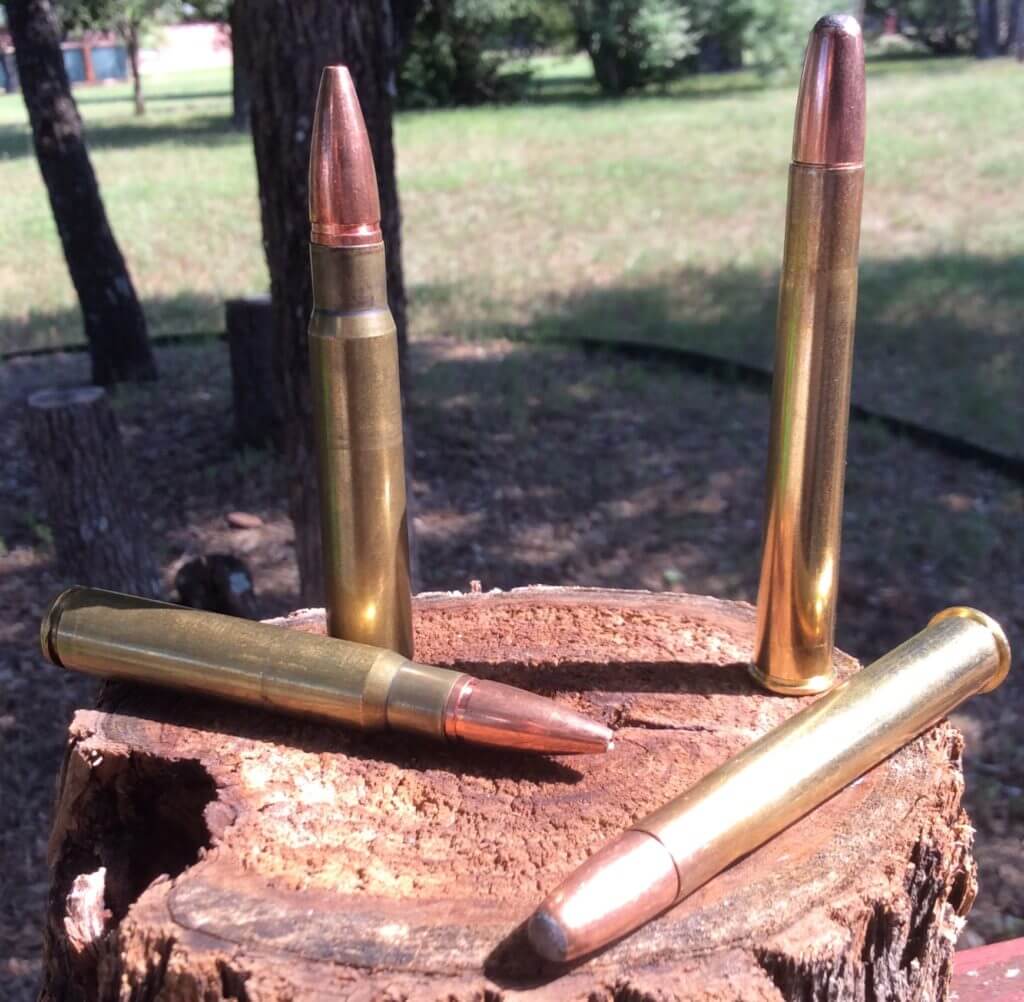
Bullets have evolved considerably since their first use from homogenous pure lead to homogenous copper and brass. Along the way, velocities have increased from a few hundred feet per second (fps) to a few thousand feet per second. For the most part, hunters have strived for complete penetration on whatever game animal they are pursuing.
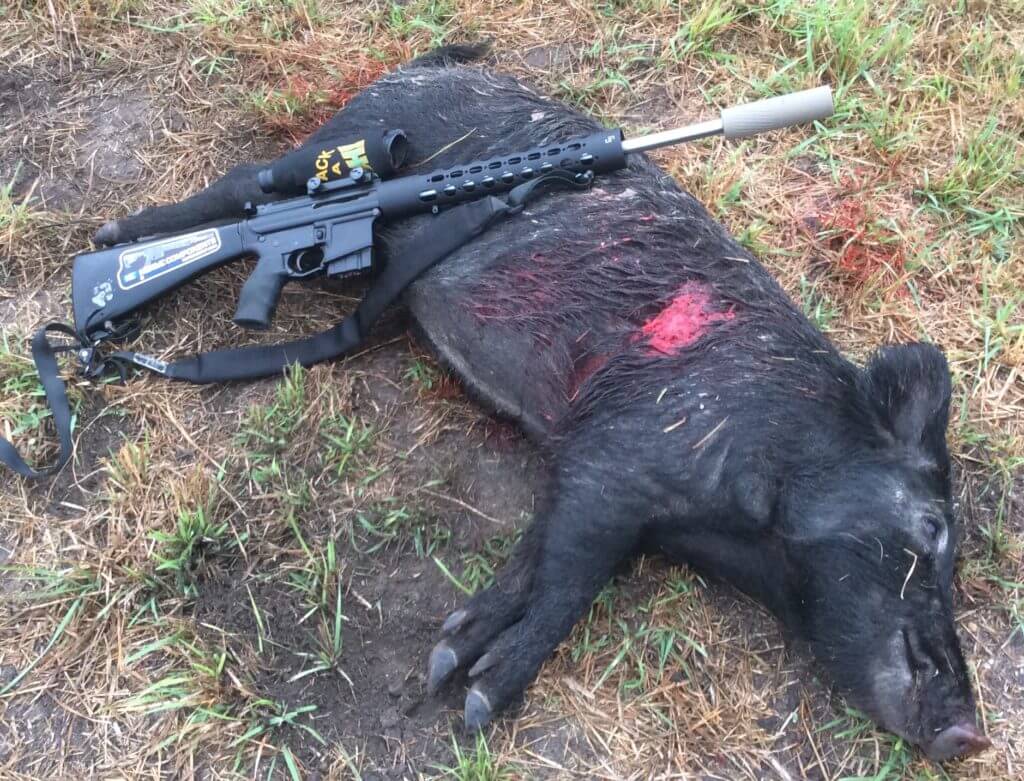
This provides two holes in your animal and a good blood trail to follow if the animal isn’t lying within eyesight. In relatively recent history, some hunters have preferred to have the bullet expend all of its energy and remain inside the animal. This is not much of an issue until you start pursuing large muscular and dangerous game, for these animals penetration always seems to be the preference of those with much experience as you will need to break big bones and penetrate through very thick and tough muscle.
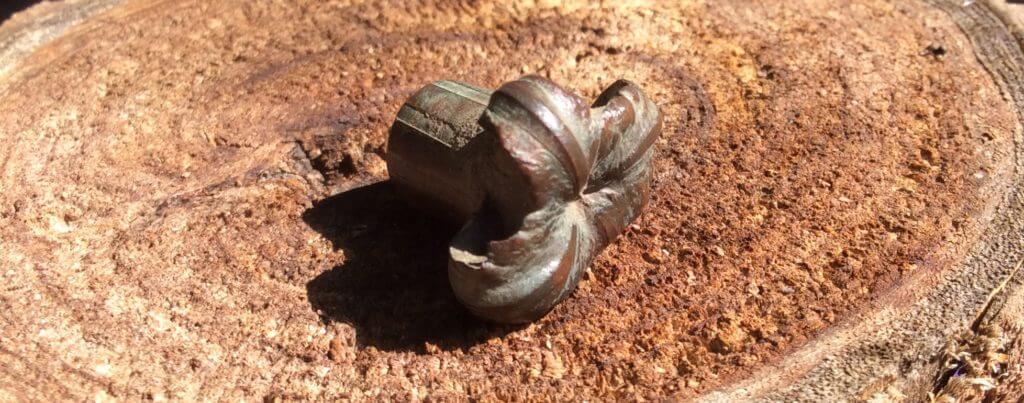
Not long ago one of the greatest proponents of complete penetration, Elmer Keith, was able to accomplish his desires by simply using larger than normal calibers and heavy for caliber bullets.
His exploits of pronghorn antelope hunting with 338 WinMag, and equivalent size guns or elk hunting with 458 WinMag are well documented in the old Hunting magazines. In the fifties and sixties, the idea of premium hunting bullets to guarantee penetration and controlled expansion was in its infancy. It was easier to go with larger calibers and heavier bullets, especially when your game was elk sized or larger. On the other end of the spectrum where velocity and lighter bullet construction causes the bullet to expend all of its energy in the game, we have Roy Weatherby. Both of these guys were and are well-respected authorities on their preferred methods of taking game.
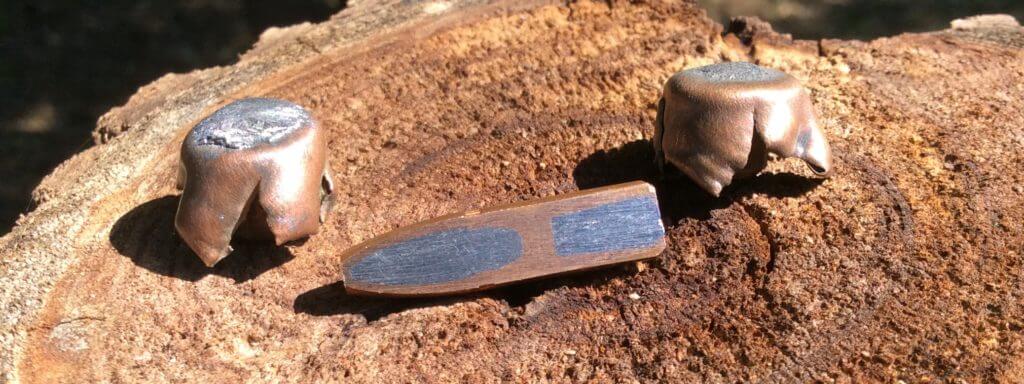
Another person that helped pioneer the premium bullet market is John Nosler, all of these guys were really working at the same basic timeframe, the late forties and into the fifties. At the same time, hunters were enamored with velocity and big belted magnums, and the fact that E=mc2, showed that the more velocity they had meant they were getting more energy on target. If you are shooting thin-skinned and light boned animals that formula holds true, but if you step up to heavy-boned animals or thick-skinned and dangerous game, it really doesn’t equate truthfully. If you are used to hunting our most popular big game, Whitetail deer or those animals that fit that size, Pronghorn, medium-sized Mule deer, Coues deer, medium size feral hogs, etc. you really don’t need a premium bullet, provided you’re not using a small caliber. A mid-weight or heavy for caliber standard construction bullet should serve you well without any worries. This saves you the expense of shooting a premium bullet for game that doesn’t really need it. You can use one for insurance if you want, but the vast majority of us don’t need a premium bullet for our normal big game hunting.
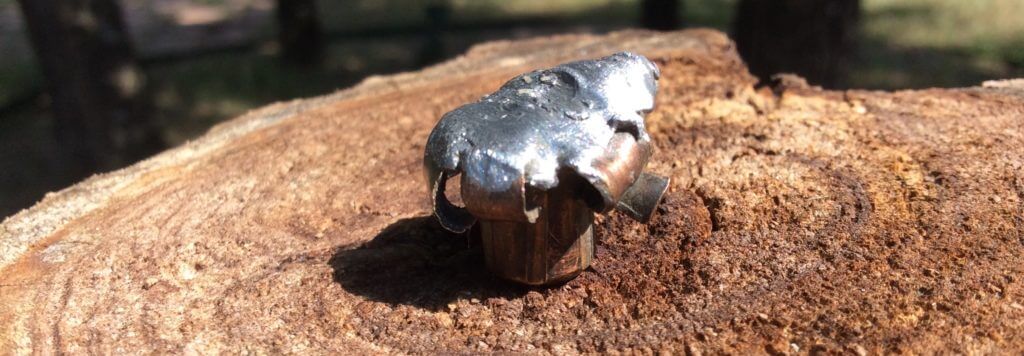
I’ve shot Nosler partitions and Barnes X bullets early in my hunting career when I was chasing south Texas whitetails, not because I needed them to kill deer, but I wanted complete penetration no matter the angle of the shot, so finding them in the thick brush could be accomplished easier and quicker. I was also using big magnums and pushing bullets at high impact velocities, and premium bullets helped with penetration. This was before the advent of cheap and accurate rangefinders, so velocity was how you compensated for a rough range estimation. As time went by and range estimation was easier to accomplish, I realized I could get the same performance from standard calibers, 270, 308, 25-06, 6.5×55, 338-06, etc. It also allowed me to use standard construction bullets.
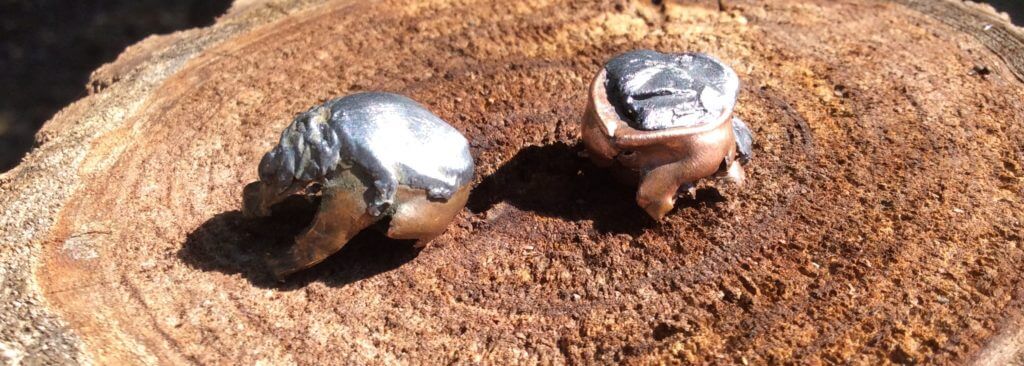
My preference regarding game is that I want two holes in my animals, one in, and one out. Using proper bullets or heavy for caliber bullets I can use standard cup and core construction bullets and achieve the results I want. On normal big game, thin-skinned and light boned, if my bullet fails to fully penetrate I will still be rewarded with adequate performance because I am striving for full penetration, and a small failure is not an issue. However, if I strive for no exit wound and only achieve a shallow wound cavity due to too early or too rapid bullet expansion. This can create a very long or unsuccessful trailing job and a very painful slow death for the animal. On larger animals, elk, moose, bison, large feral hogs or bear you are now dealing with very dense and tough muscle as well as large strong bone structures.
These are still relatively thin skinned but now we need to more closely match our bullet up with our expected impact velocity and our target. Expansion is the enemy of penetration and velocity is the driving force for expansion, more velocity doesn’t equate to more penetration. If more penetration is your goal you are better going with more bullet mass than more velocity, or use a premium bullet that will ensure controlled expansion and adequate penetration. In the end, today’s hunter has a tremendous selection of completely adequate bullets to choose from and as long as moderate velocity is used, standard cup and core bullets can provide excellent results.
Bullet failures I’ve personally seen or had happen to me, have all been due to poor choices or extreme conditions that the shooter didn’t account for. Basically, the bullet chosen wasn’t the proper bullet for the task it was asked to accomplish. My first failure was on a bullet that provided very good accuracy from my 300WinMag, and for its intended purpose of taking long-range bucks in south Texas Senderos, it worked great. However, when an opportunity to take a large doe presented itself, the doe was about 50 yards away. A bullet designed for good expansion at distance once velocity falls off a bit didn’t exactly perform as expected at point-blank range. The doe died swiftly, but it took me more than two hours to find it dead a mere fifty to seventy-five yards into the dense brush, due to no exit wound. The bullet came apart quickly when it ran into the doe at 3100 feet per second. The fault was mine, I asked the bullet to do something it wasn’t designed to do. After that poor choice on my part. I changed to Barnes X bullets and never encountered any further issues. Another failure was simply too much bullet for the task, I had just taken possession of a new custom 338WinMag, and the only bullets I had on hand were 250gr. Silvertips. Granted that’s more gun than I needed for Texas whitetails, and more bullet as well. I decided that placing the bullet properly would alleviate the issue, besides Elmer was using that caliber on pronghorns with success. The first buck I shot was a cull deer, he took the bullet slightly quartering towards me and dropped. I took my eyes off of him for a second or two and when I looked back, he was gone! Luckily, it was morning and I had improving light to conduct my search, instead of failing light. Since I had no idea what direction he took off in I planned on cutting my morning hunt short and go look for him immediately. As luck would have it I had a decent blood trail and I could make out his white belly 75 yards off in the brush. I chalked it up to a fluke and continued to hunt with that bullet and gun combination. Later in the season I had a chance at a nice heavy horned buck at about 200 yards and took the shot. Again, he dropped at the shot this time I kept my eyes on him and lo and behold, he got back up and made it to the brush close by. This time the shot was made in the evening, he didn’t make it 25 yards, but in the time it took to wait, the coyotes had taken a hindquarter and eaten it to the bone. There simply wasn’t enough resistance for the bullet to get good expansion. Once I realized my error I started running the bullet into as much animal as I could, by shooting them from one end or the other. That fixed my failures and I still only recovered one bullet, with using stem to stern shots. After that first year, I changed to Nosler 210gr. Partitions and never had any issues with any shot that was presented.
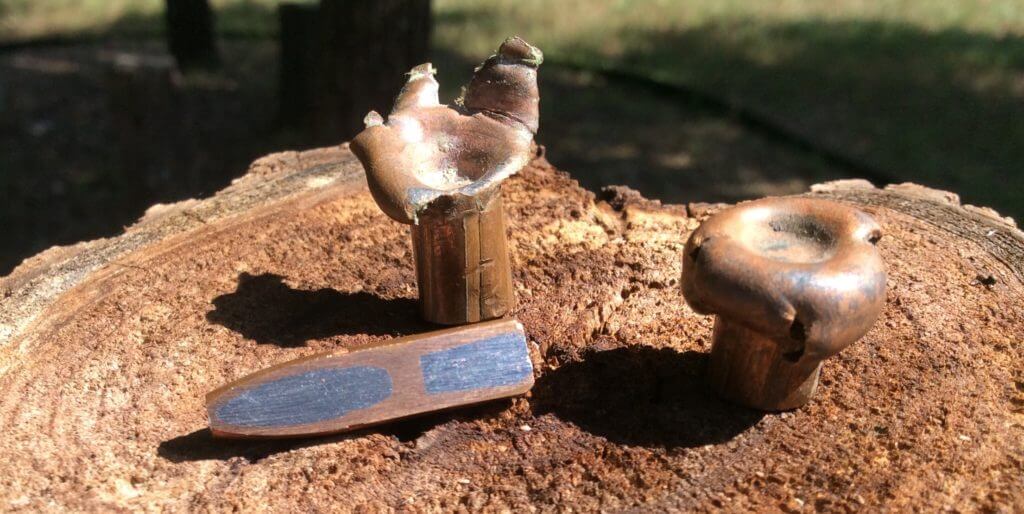
I’ve been lucky in that none of my bullet failures has cost me a lost animal. If it weren’t for a good dog I’d have lost at least one, it was hit with an unsuitable bullet from a 45/70. A simple switch to a heavier jacketed bullet meant for higher velocity solved my problem.

Some other lessons learned about cup and core standard built bullets, is very similar to the bullet from the 300win mag. and the big doe. This time it was with standard short action rounds like 308win. and 260rem. the shots were relatively short, less than 100 yards. The bullets involved were both good quality bullets and ones I’ve used many times before with good results and will continue to use them. Shots taken with distances at less or close to 100 yards, place greater stresses on the bullets and limit penetration. This is leading to no exit wounds on game as light boned as south Texas whitetail, the bullets are being found on the off side just under the skin.
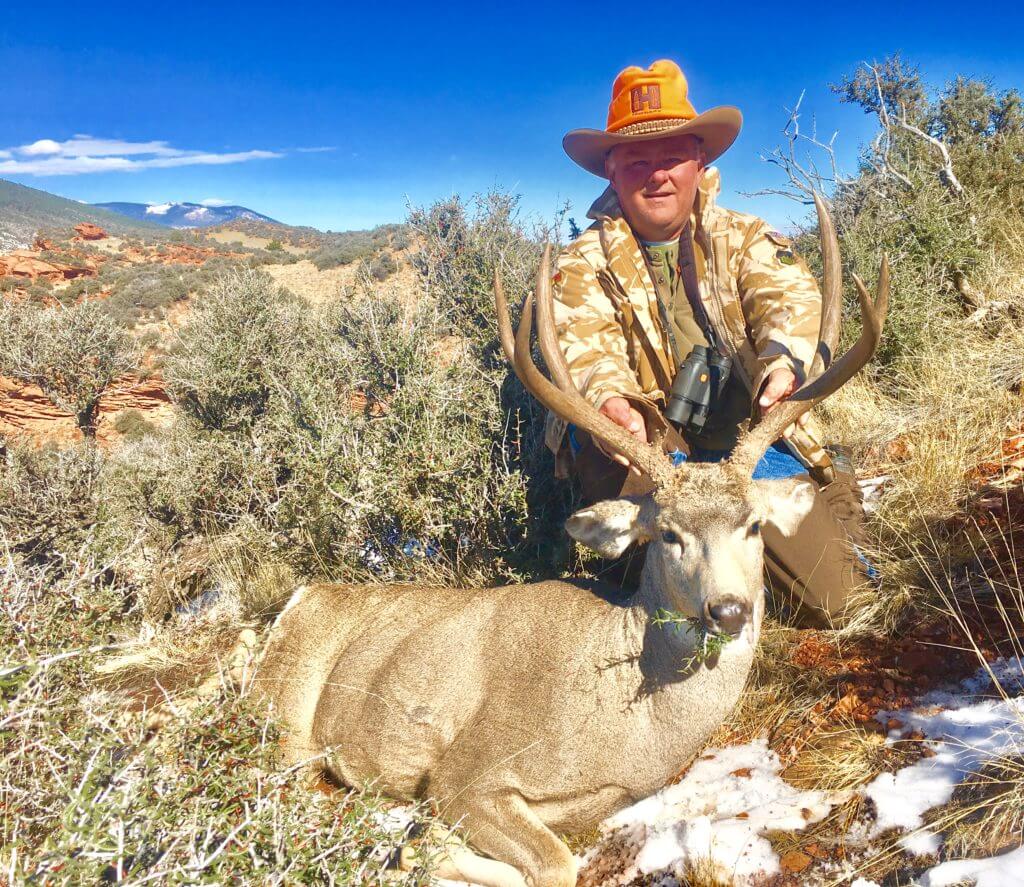
So even standard velocity rounds, using standard construction bullets can fail to give complete penetration. If the possibility of losing game due to thick cover or bad conditions exists, a premium bullet that gives complete penetration or a heavier than normal bullet can be cheap hunting insurance. It is for this reason that I currently prefer 165gr. standard 30cal. bullets over my original choice of 150gr.
Those failures have led me to pick my bullets much more carefully and match them not only to the caliber but also to the animals. I have used partition bullets and mono metal bullets, depending on caliber and quarry. If I’m going to be sending it downrange fast or running it into something big and tough, then a premium bullet is a cheap insurance policy. If I’m using a standard caliber and hunting medium game then I’ll go with normal bullets and just be aware of their potential shortcomings.
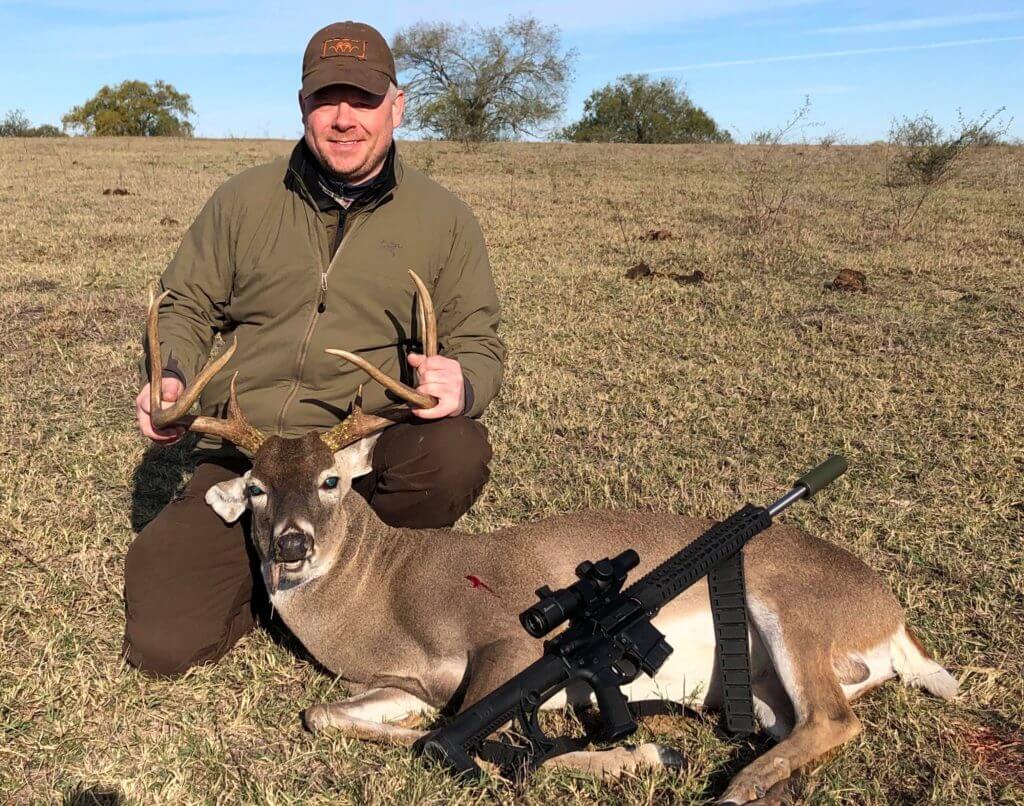
The Partitions have been used in 257 Magnum, 300 Magnum, 338 Magnum, and 35/8mm Magnum guns that push bullets to their limits and can cause failures, but with Partitions…no failures ever! Bullet weights from 115gr. to 250gr. all performed exactly as they should. It didn’t matter if the animal was a 115-pound deer, the caliber was a 35/8mm magnum, and the distance was 60 yards, they always do what they are supposed to do. They got used in normal guns as well 6.5mm with 125gr. and 140gr., 25cal. with 115gr. and 120gr., and 24cal. with 100gr., all perform as advertised, only a few ever recovered. I’ve even used partition type bullets in handguns to hunt with. I really like the partition style bullets of Nosler and Swift, they allow for dramatic expansion quickly and then deep penetration.
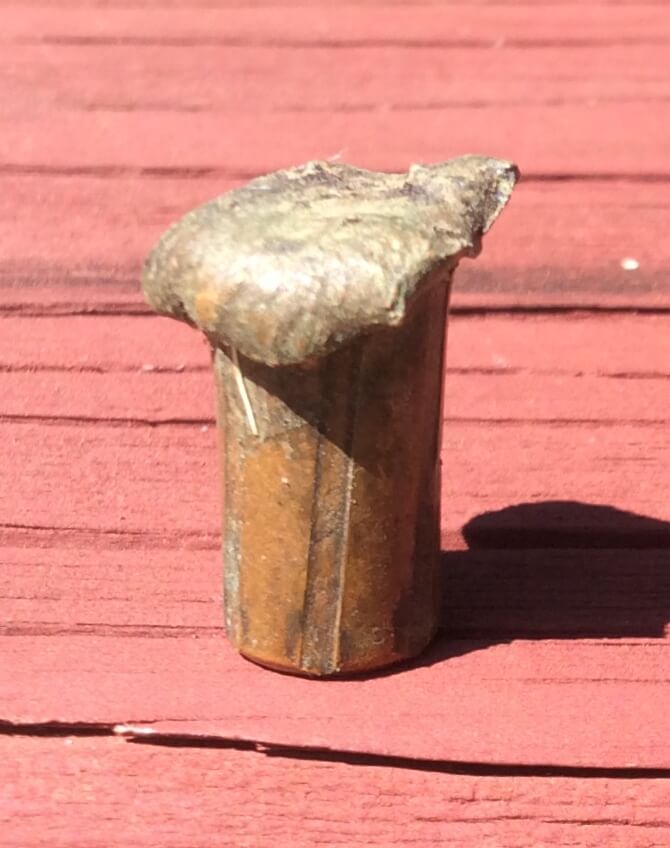
The mono metal bullets have been used in 300 Magnum, 35/8mm Magnum, 416 Magnum, 9.3mm, 6.5mm, and 25cal. They penetrate like no other expanding bullet, they expand well given adequate material to run through and they don’t come apart. Sure they may lose a petal or two but they maintain structural integrity very well. I have recovered only one, and it provided 5 foot or so of penetration from the top of a whitetail does head, through the neck, and recovered in the pelvis. The mono metal bullets of Barnes and Hornady work really well when penetration is absolutely needed or desired. The wound channel created by them is relatively narrow in diameter but long, and they allow a lighter bullet to be used on larger game. I’ve had excellent results with Hornady’s GMX bullets, a 165gr. .30cal. was used on my bull elk, and a 90gr. .257cal. was used on a nice feral hog, both gave complete penetration.
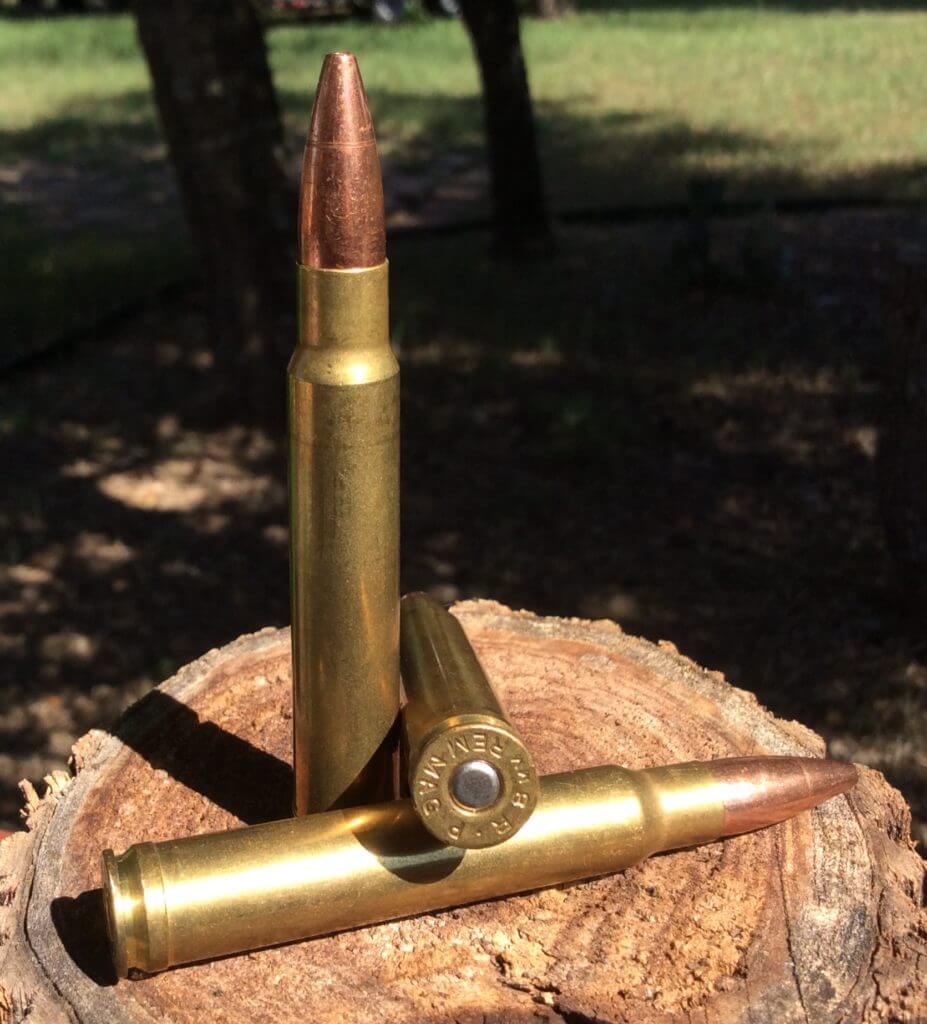
The bullet is the only thing we as hunters have that will make contact with our intended target and determine if our hunt is a success or failure. Sending it is the last thing we do that we have some control over. We owe it to our quarry to choose carefully and take great consideration which projectile we will use. It is vitally important to consider matching the bullet not only to the game but also to the velocity you intend to send it downrange at, as well as the impact velocity you expect. Remember the intended Impact velocity is important but sometimes things don’t work out as intended so try to be prepared for the unexpected. There is no best bullet for every animal, every caliber, every distance, and every velocity. The price of the bullet is small compared to the cost of your hunt, but premiums are not needed all of the time. They are a small insurance policy should a not so optimum shot at a once in a lifetime trophy presents itself.